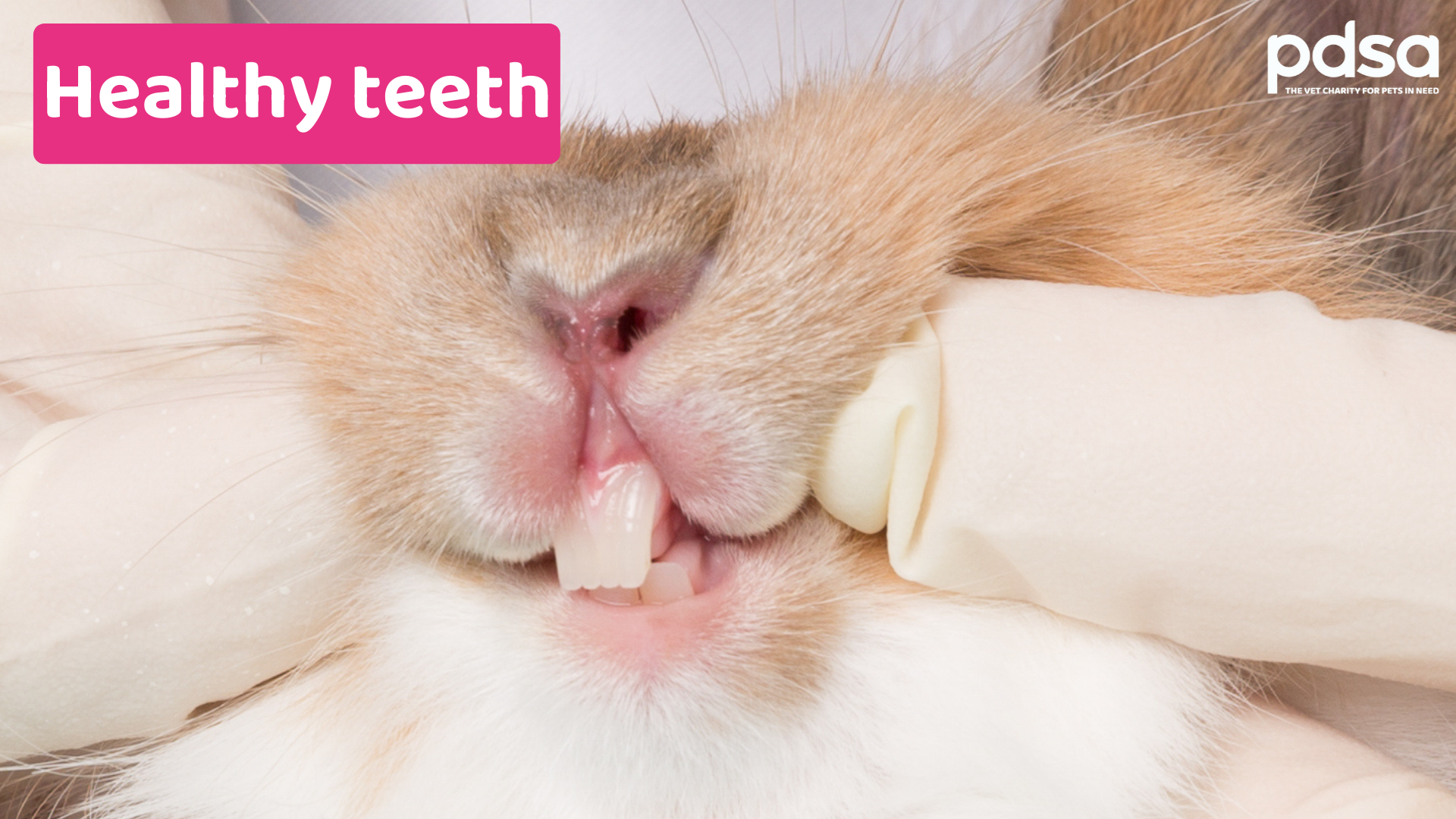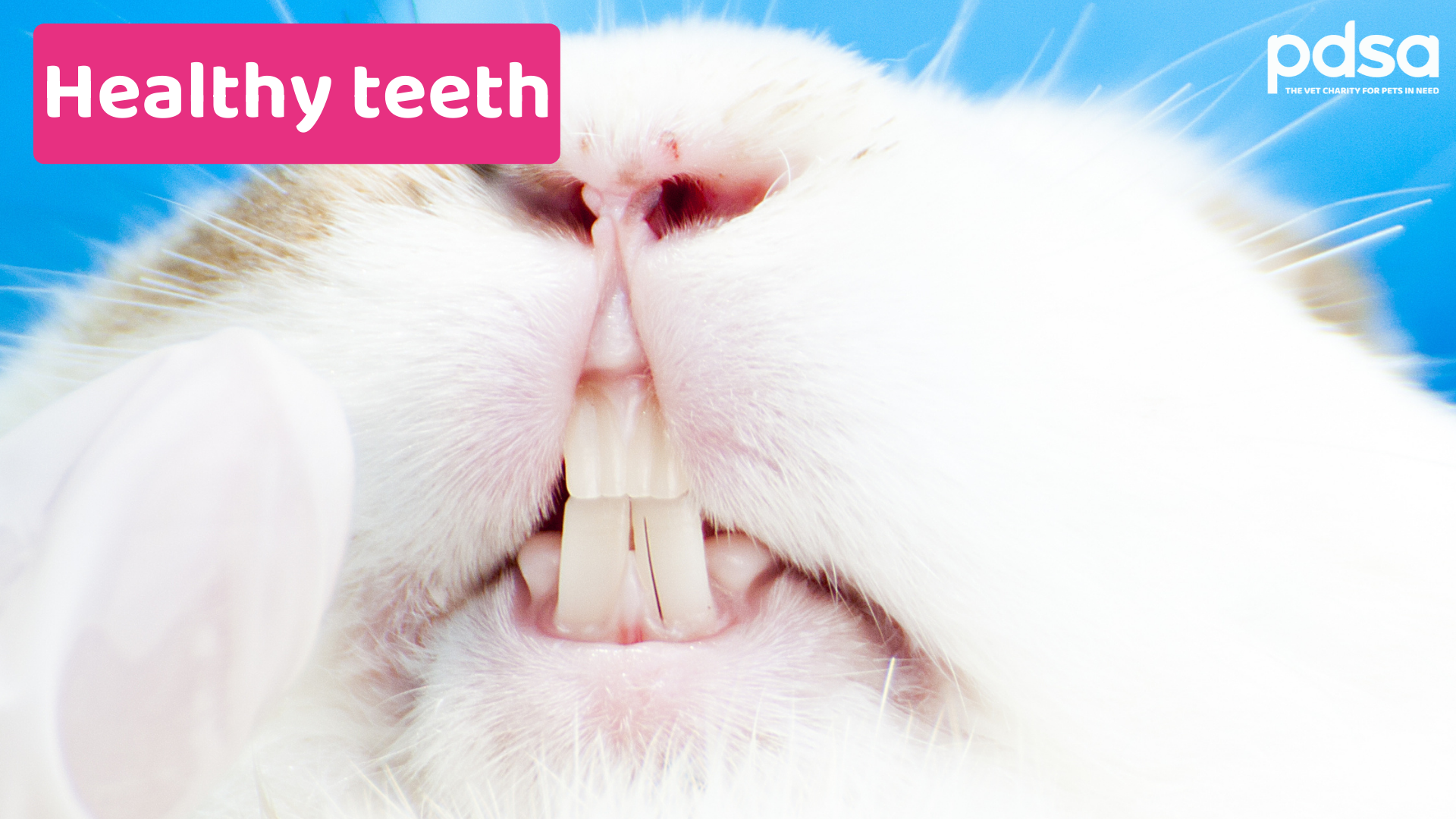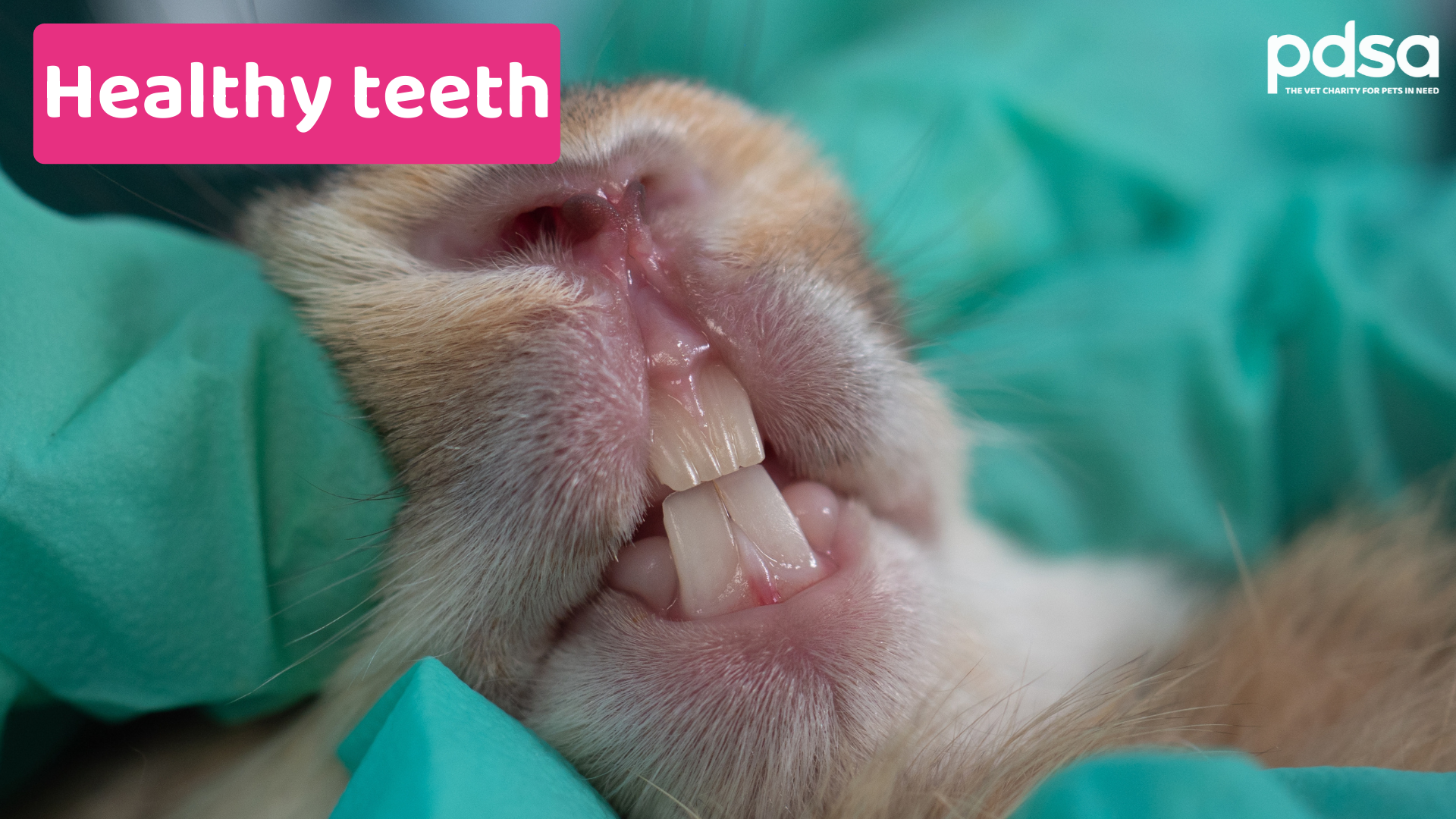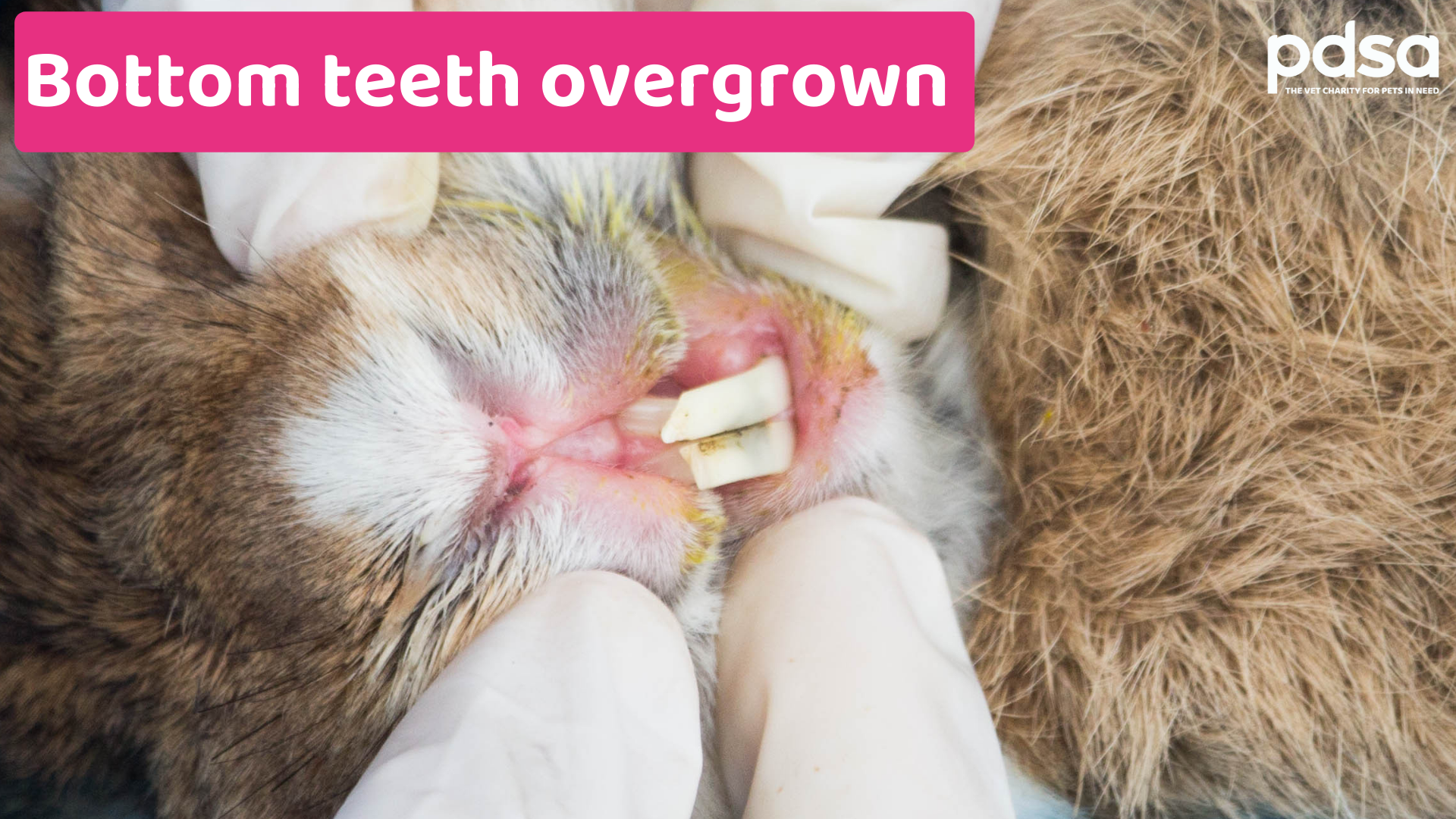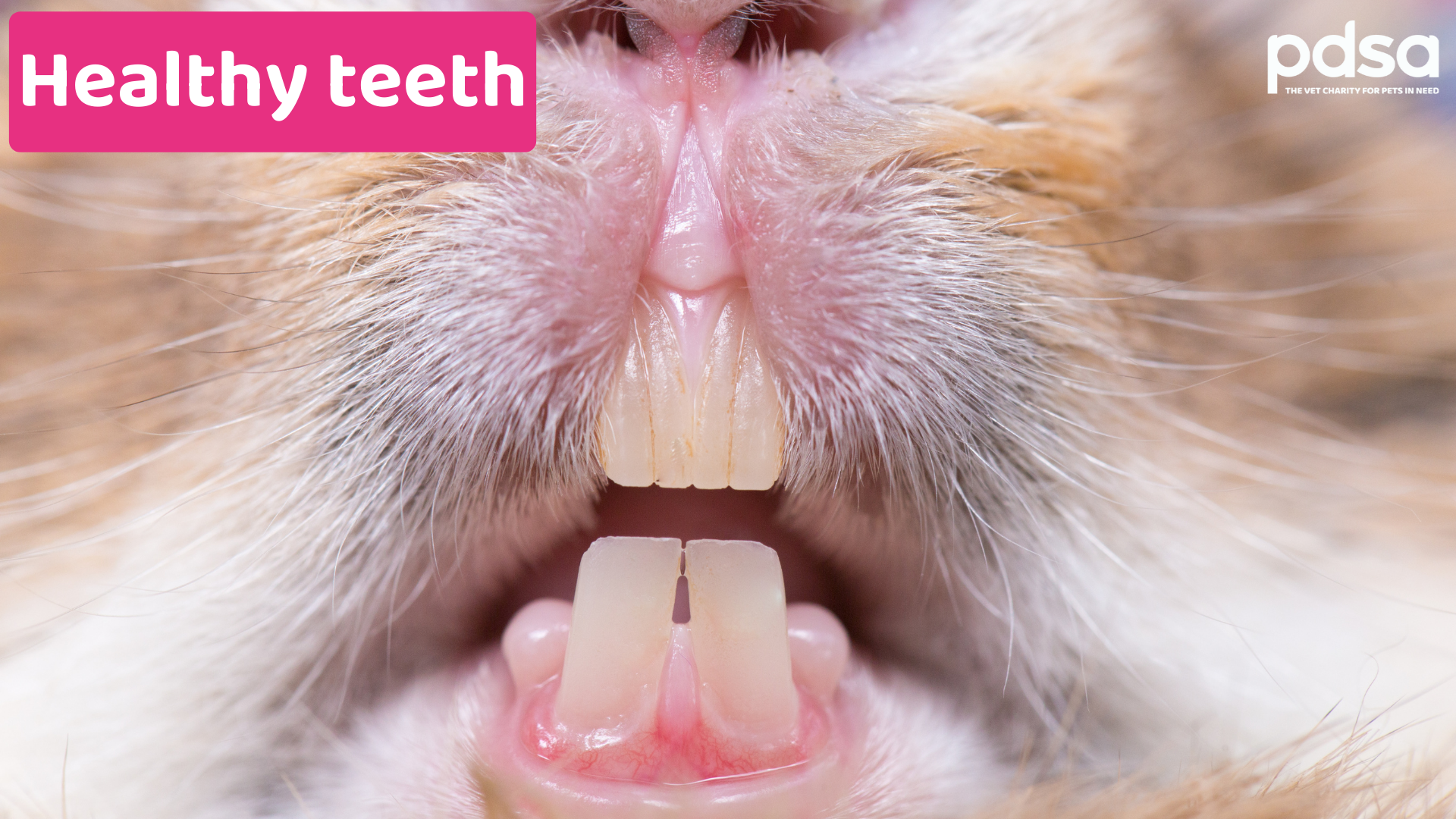How to check your rabbits’ teeth
Overview
- Dental disease is common in rabbits, so checking their teeth regularly is important to ensure you spot any problems early.
- Always hold your rabbit securely on a non-slip surface and be gentle while you check their teeth.
- Never force your rabbit to have their teeth checked if they seem uncomfortable, struggle, flinch, or panic.
- If you notice any signs of a problem, book an appointment with your vet.
- Read more about dental disease in rabbits.
Step 1 – Check their front teeth
- Hold your rabbit on a non-slip surface, such as a bath mat.
- Gently lift their lips to check their incisors (front teeth).
- You should see two at the top and two at the bottom*
- The top two teeth should sit just in front of the bottom two and overlap them by a few millimetres
- They should all be growing straight - it’s not normal for any of them to be at an angle or overlapping each other by more than a few millimetres (see image)
- They should be white and smooth
*There are two additional teeth that sit behind the upper incisors called ‘peg teeth’, but you won’t be able to see these as they are tiny.
Step 2 – Check their gums
- They should be salmon pink in colour.
- There shouldn’t be any redness or sores.
Step 3 – Check their back teeth
- You won’t be able to see your rabbits’ back teeth, so instead, gently feel their cheeks and lower jaw on the outside, checking for lumps, heat, or signs of pain.
- Check for other signs of dental disease, including:
- Wet fur around the mouth
- A white sticky discharge from the eyes
- Reduced appetite
- Reduced grooming
- Being quieter than normal
If you notice any problems, book an appointment with your vet.

How often should I check my rabbits’ teeth?
Ideally, you should check your rabbits’ teeth every week so you notice any signs of a problem as early as possible.
How many teeth do rabbits have?
Rabbits have 28 teeth:
16 top teeth:
- Four incisors (front teeth) –you will only be able to see the front two because the others, called ‘peg teeth’ are very small and are hidden behind the front two.
- Three premolars (middle teeth)
- Three molars (back teeth)
12 bottom teeth:
- Two incisors (front teeth)
- Two premolars (middle teeth)
- Three molars (back teeth)
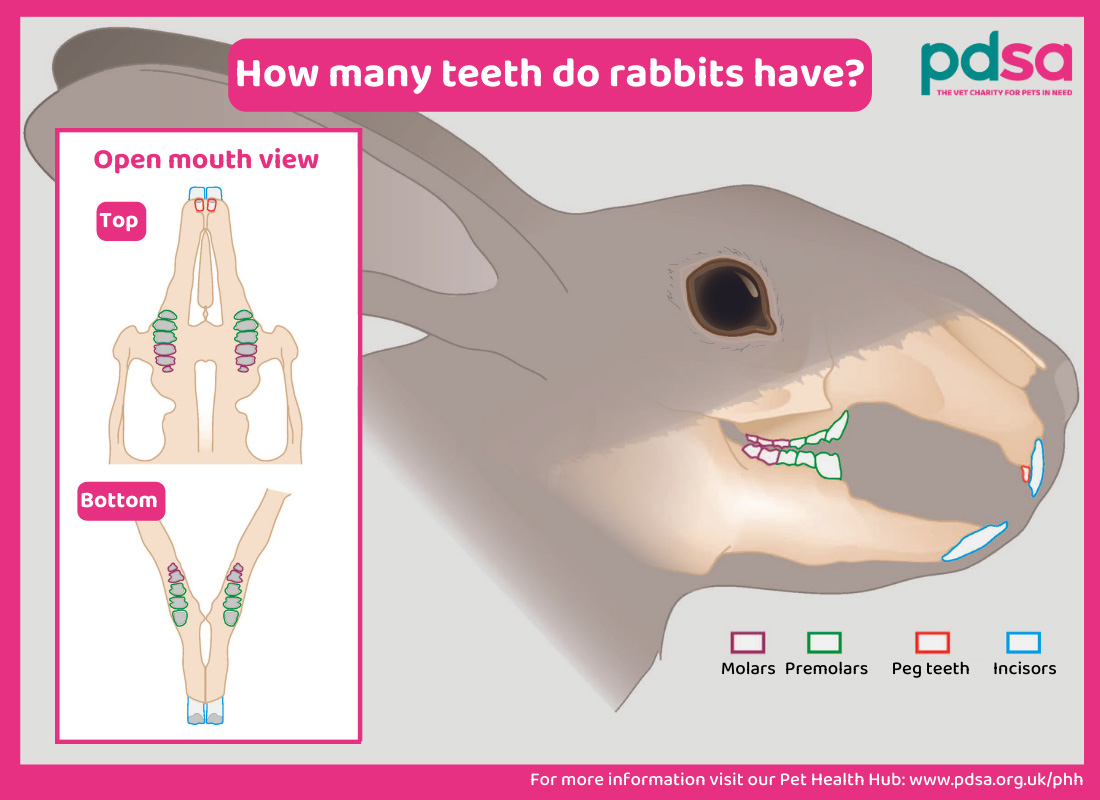
Published: Sept 2022
Did you find this page useful?
Tell us more
Please note, our vets and nurses are unable to respond to questions via this form. If you are concerned about your pet’s health, please contact your vet directly.
Thank you for your feedback
Want to hear more about PDSA and get pet care tips from our vet experts?
Sign up to our e-newsletter
Written by vets and vet nurses. This advice is for UK pets only. Illustrations by Samantha Elmhurst.

 Video found at youtu.be/ewHkrdaTww4
Video found at youtu.be/ewHkrdaTww4
